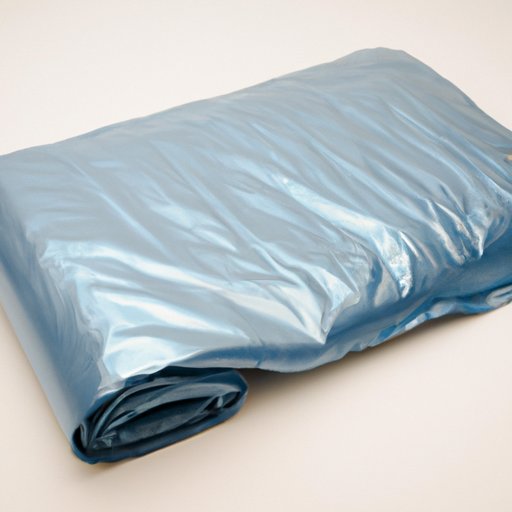Introduction
Space blankets have become a popular item in emergency preparedness kits, camping gear, and outdoor sporting events. These lightweight and compact sheets of reflective material are designed to keep you warm, but their uses go far beyond just insulation. In this article, we’ll explore the science of how space blankets work, their various applications in survival situations, their historical development, and even some surprising benefits you might not have considered.
The Science Behind Space Blankets: How Do They Work to Keep You Warm?
Space blankets work on the principles of heat transfer. When you’re out in the cold, your body generates heat, which then transfers to the air around you. This heat loss is what makes you feel cold. Space blankets work by reflecting this heat back towards your body, essentially creating a barrier between you and the cold air outside.
The materials used in space blankets are typically made of a thin and lightweight nylon or polyester, coated in a layer of metallic material such as aluminum or gold. It’s this metallic coating that gives the space blanket its reflective properties, bouncing infrared radiation (heat) back towards the source.
Space blankets are commonly used in outdoor endurance events like marathons and triathlons, to help athletes retain body heat when they stop moving, as well as in emergency situations where people may be stranded or lost outdoors.
Surviving the Cold: A Comprehensive Guide to Using Space Blankets
Space blankets are invaluable in survival situations, where every bit of warmth must be conserved. Some practical ways of using space blankets include creating a barrier between the cold ground and your body, making a temporary shelter, and reflecting heat from a fire. Many people have used space blankets for outdoor survival when they’ve become stranded in the wilderness.
When using space blankets in the wilderness, it’s important to know how to maximize their effectiveness. For example, using natural shelter like rock formations and trees as support structures for your space blanket shelter can help insulate you from the cold ground.
An excellent real-life example of space blankets’ practical applications is the 2010 Haiti earthquake. With many people unable to find shelter or basic necessities, makeshift hospitals were set up with pallets and space blankets serving as bedding. In this example, space blankets provided vital insulation and warmth during a time of crisis.
The Evolution of the Space Blanket: From NASA to Emergency Response
Space blankets have come a long way since their beginnings as a NASA invention. In the early days of space exploration, protecting astronauts from extreme temperature changes in space was one of NASA’s biggest challenges. The solution? The space blanket.
Over time, space blankets have been adapted for everything from military use to athletic training and survival gear. Search and rescue teams use space blankets to help locate missing people, and they are now common in most emergency preparedness kits.
As technology advances, innovation will continue to refine the design and materials of space blankets. One recent development is the use of nanotechnology in the production of space blankets, creating an even lighter, more durable product.
Beyond Warmth: The Surprising Benefits of Space Blankets
Space blankets offer unexpected benefits beyond their insulating properties. One of the most notable benefits is the ability to signal for help. The reflective metallic material can be used to catch the attention of rescue teams or other people in the area, increasing your chances of being found.
Space blankets also provide protection from the wind and rain, making them an excellent addition to any camping or outdoor adventure kit. They can be used to insulate your gear or make a waterproof shelter in case of a sudden downpour.
An innovative use of space blankets is their applications in fashion design. The reflective material has been used in high-end clothing and accessories on fashion runways, bringing a new meaning to survival wear.
Space Blankets 101: Everything You Need to Know About this Must-Have Camping Accessory
When it comes to camping, space blankets are a versatile tool to have on hand. They’re lightweight, compact, and easy to pack. With a little creativity, you can find a myriad of ways to use them. For example, you can wrap a space blanket around your sleeping bag for added insulation and warmth.
If you’re planning on using a space blanket as a shelter, it’s important to know how to set it up properly. Being able to secure the corners and edges will create maximum holding power and insulation. As with any outdoor gear, proper care and maintenance are essential to keep your space blanket in good condition and ready for use at any time.
Conclusion
Space blankets offer an innovative blend of science and practicality. They’re versatile, lightweight, and offer a wide range of survival applications. Whether used in an emergency or for outdoor recreation, space blankets are a must-have. So, the next time you’re packing up for a camping trip or putting together an emergency preparedness kit, don’t forget to include a space blanket.
(Note: Is this article not meeting your expectations? Do you have knowledge or insights to share? Unlock new opportunities and expand your reach by joining our authors team. Click Registration to join us and share your expertise with our readers.)
